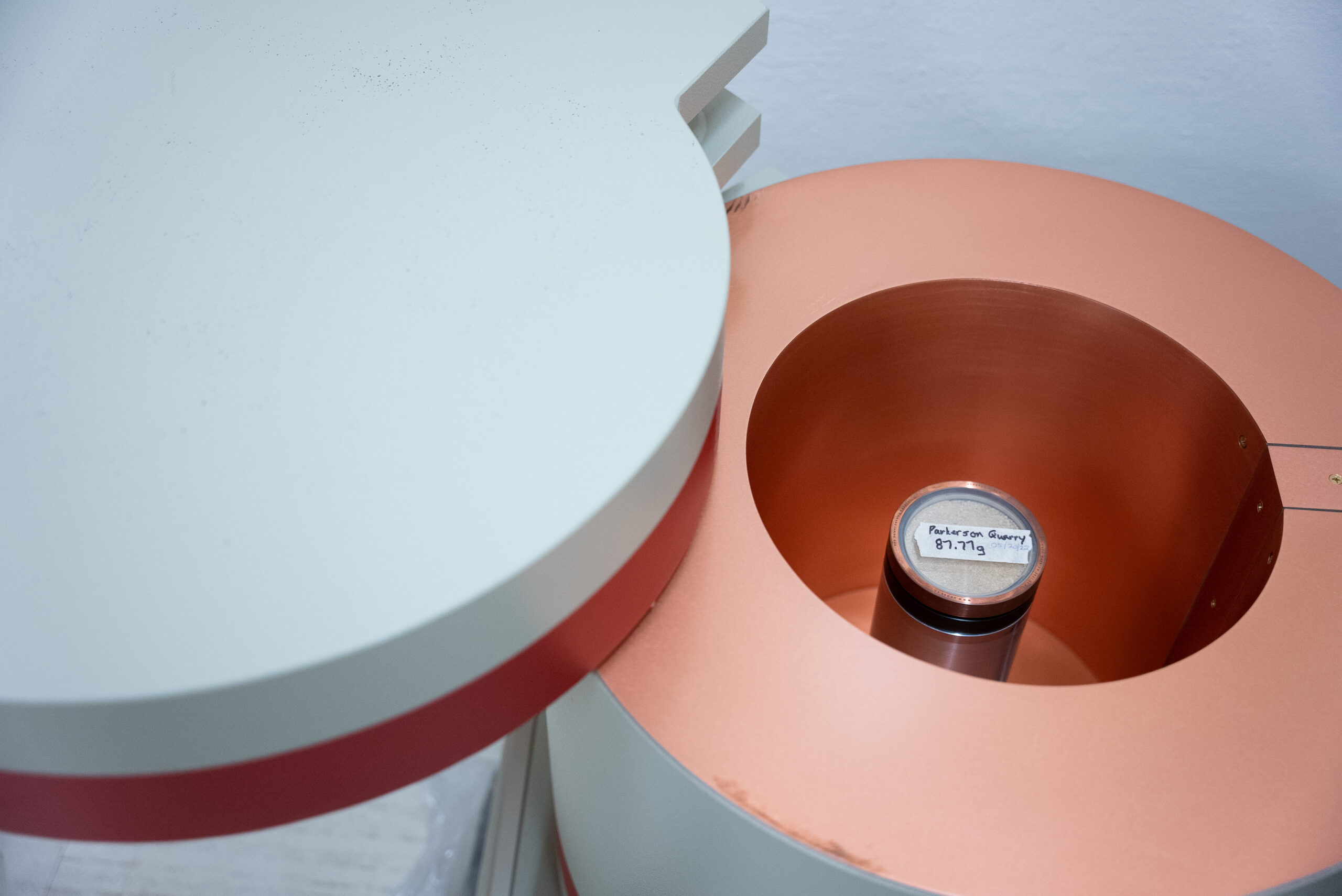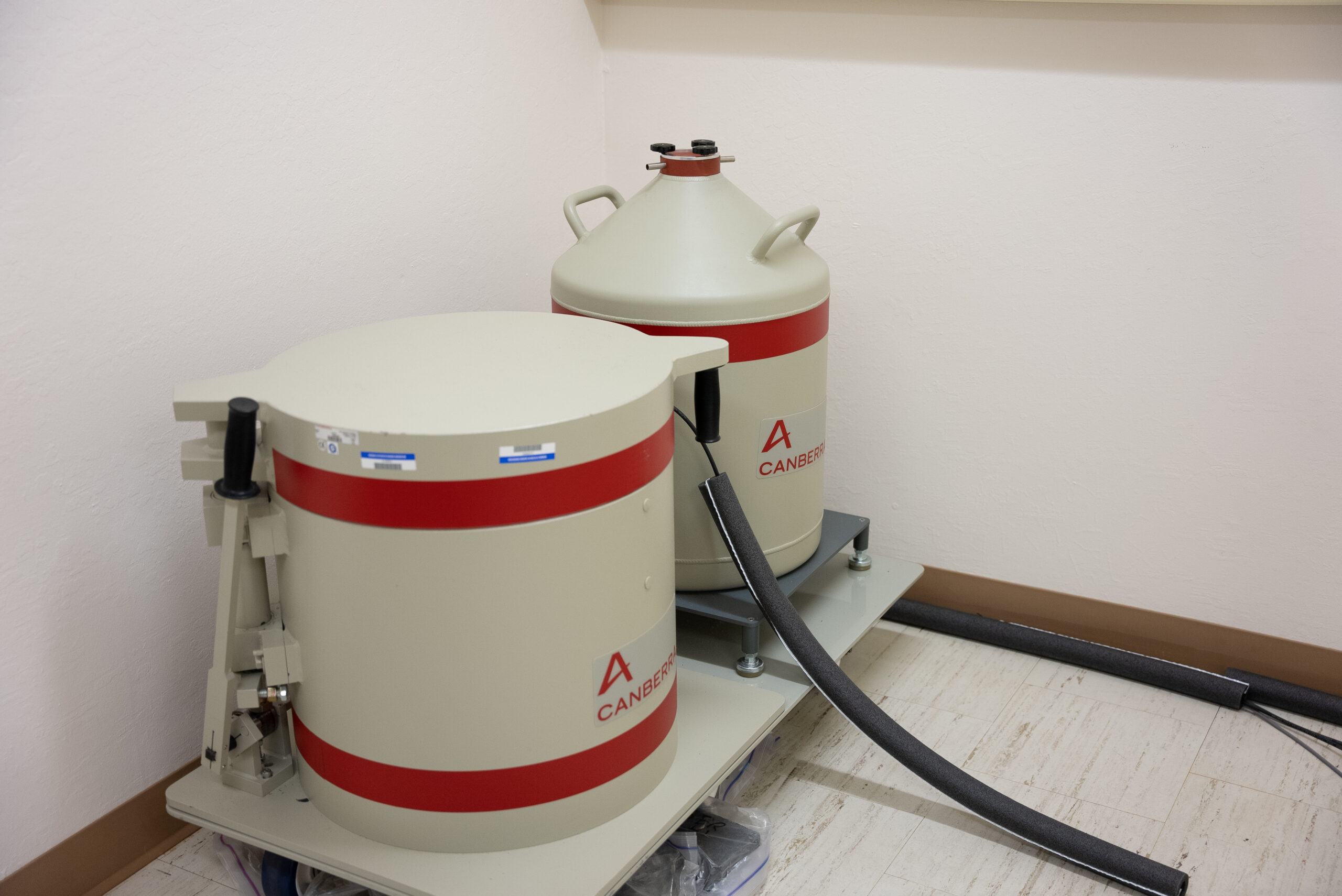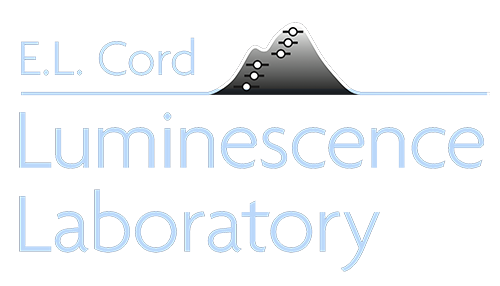
DRILL
DRI Luminescence Research Lab
The DRI Luminescence Research Laboratory (DRILL) Capabilities
DRILL has recently expanded to 1898 square feet of lab space to increase the speed, accuracy, and efficiency of sample measurement and to allow us to analyze a wider range of sample types.
Luminescence Dating of Sediments
We continue to analyze sediments from a range of depositional environments. These include colluvium, alluvial or flood deposits, tsunami or beach deposits, eolian deposits, lacustrine, fluvial, periglacial, and glacial deposits, or sediment associated with faults.
-
-
- We analyze sediments of a range of grain sizes that include fine-to-coarse silt and fine-to-coarse sand.
- Measurement and analysis can be conducted on the multi-grain aliquot or single-grain level using quartz and/or feldspar
- Our recently calibrated alpha source allows us to determine sample-specific a-values for fine-grain samples
- Dose rate measurements include measurement of parent U, Th, K, and Rb radionuclides using ICP-MS and/or U and Th parent and daughter radionuclides using high-resolution gamma spectrometry to detect disequilibrium in the U and Th decay chains.
- We have also recently acquired six alpha counters and one beta counter for alpha and beta dose rate determination.
-
Luminescence Dating of Pottery
DRILL is equipped for the processing of pottery samples and their measurement using thermoluminescence (TL) and/or optically stimulated luminescence (OSL).
Luminescence Dating of Rock and Bedrock
Our new DRILL ROCKS lab allows us to process and analyze pebbles, cobbles, boulders, and bedrock of a range of lithologies including sandstone, intermediate to felsic volcanic rocks, granitic/metamorphic rocks and limestone.
Luminescence measurements from rock surfaces or rock cores can be used to determine rock burial ages, or rock exposure ages when calibration samples are available. If present, xenocrysts or phenocrysts can also be extracted from the interior of volcanic rocks to determine an eruption age.
CONTACT
LAB LOCATION
Desert Research Institute
Northern Nevada Science Center
2215 Raggio Parkway
Reno, NV 89512

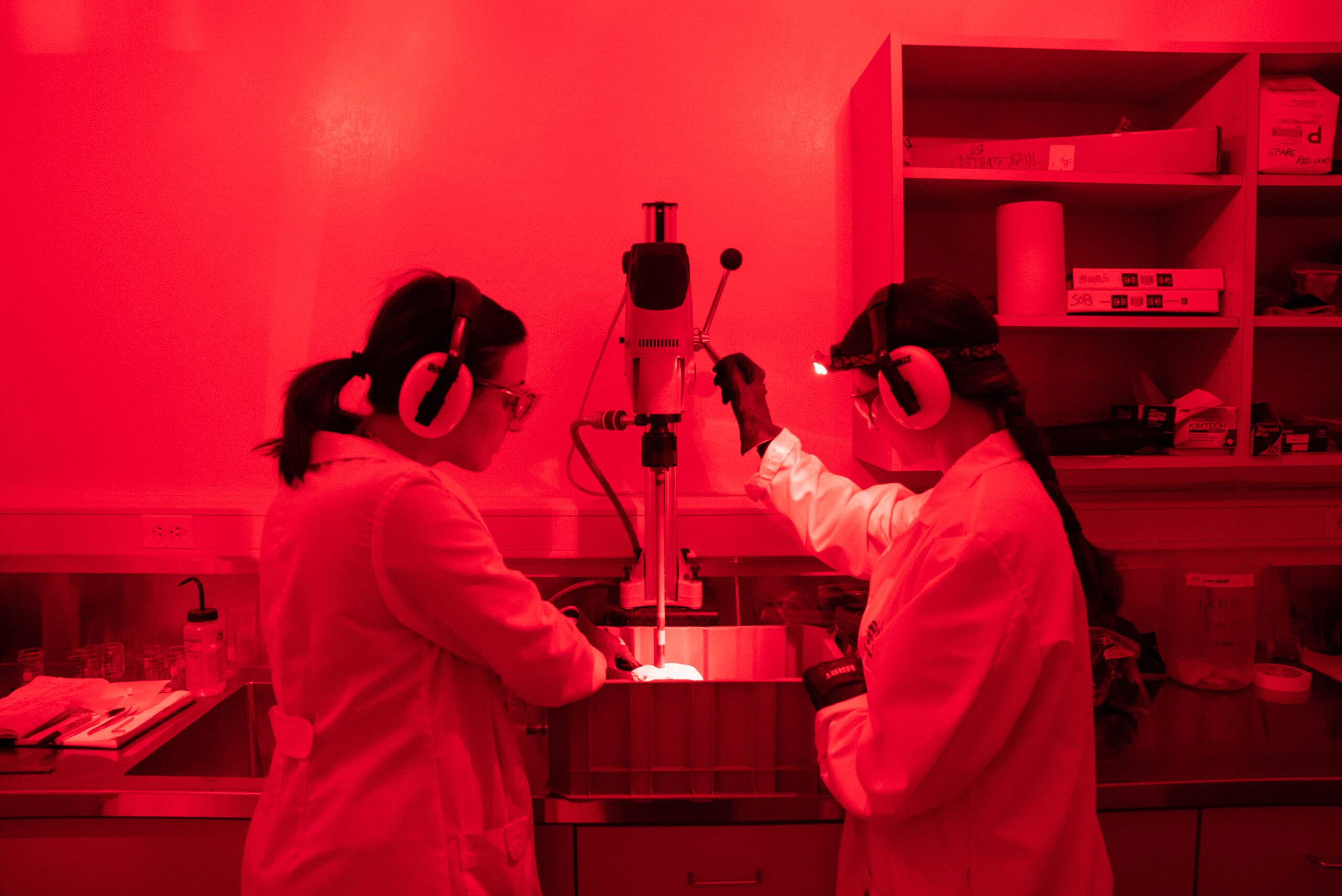
Sample Prep Facilities
Our recently expanded deep-red (>660 nm) illuminated sample preparation space includes two large fumehoods (one regular, one perchloric), and a long, double-sided bench top for sample sieving and mineral separation. Attached to the main sample prep lab is a new adjoining room called DRILL ROCKS, where rock and brick samples are processed.
Main Sample Preparation Lab
- A centrifuge for density separation of minerals (typically done with the aid of liquid nitrogen for a clean separation)
- Two large ovens for water content analysis and sample drying
- Disposable sieve mesh and stainless-steel sieves for wet sieving and graduated cylinders for suspension settling of fines using Stokes Law.
DRILL Rocks Lab
- A Hi-Tech Diamond 10″ Lapidary Slab Saw
- A Hilti DD 120 portable diamond bit wet-coring drill and stand
- A Buehler IsoMet Low-Speed Precision Saw with a 0.3 mm precision diamond wafer blade
- A Dremel Stylo+ Craft variable-speed rotary tool with a 90-piece ZFE Diamond Burr Bits Drill Kit
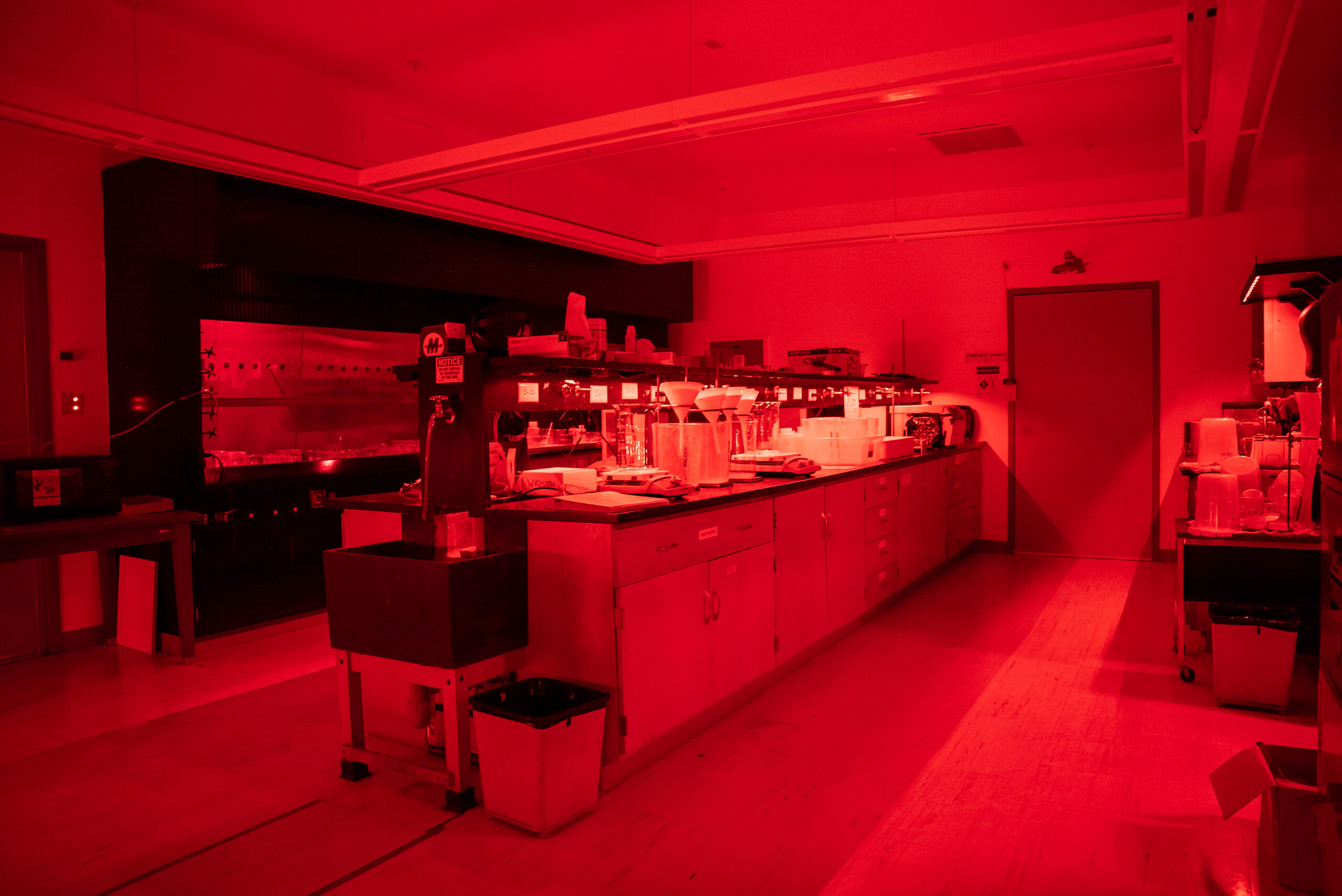
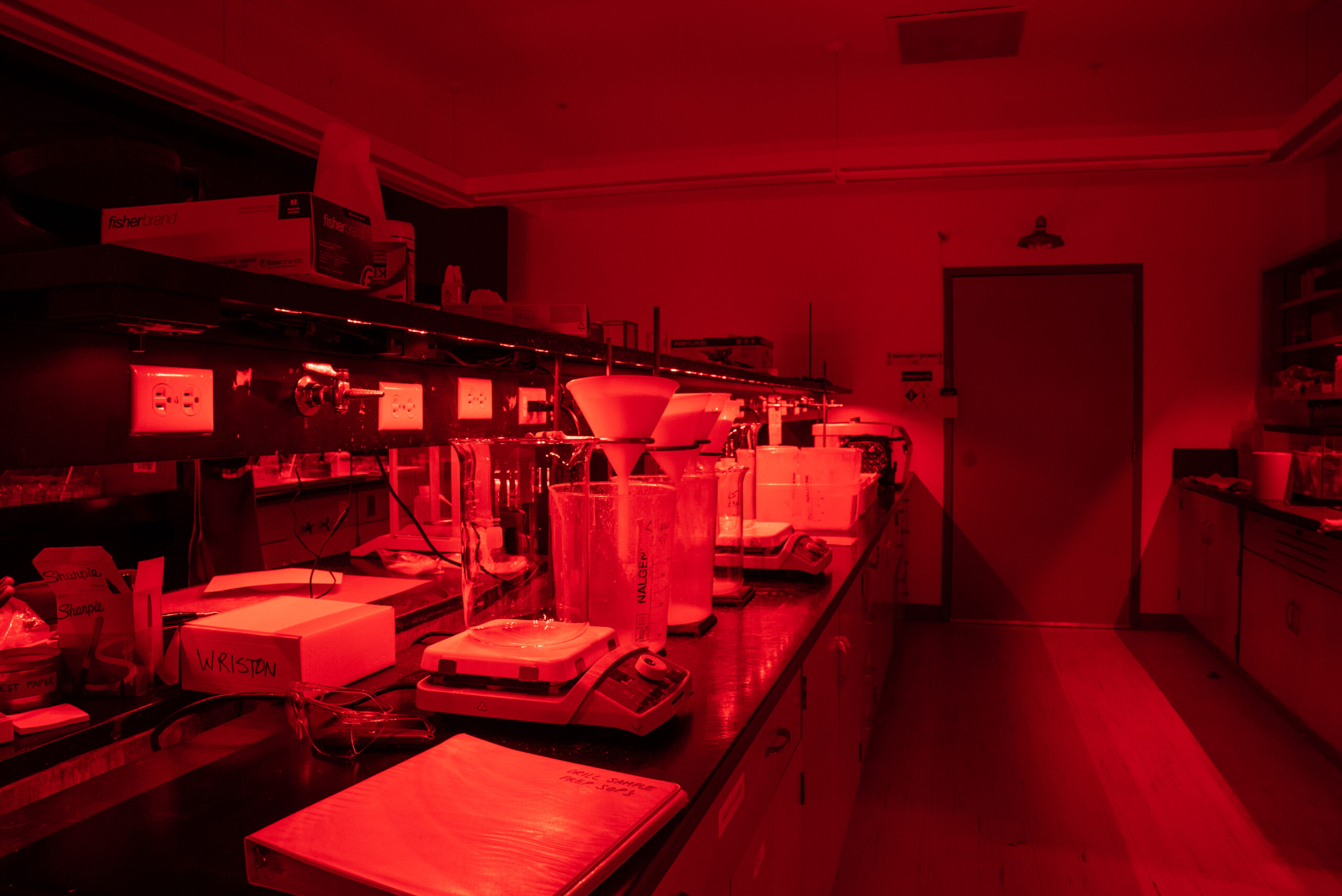
Sample Measurement Facilities
DRILL is equipped with 5 readers, a lab-based, broad-energy gamma spectrometer and a portable NaI gamma spectrometer.
Luminescence Readers
4 x Risø TL/OSL Readers that include:
- 90Sr beta sources, an alpha source, and X-ray generators for sample irradiation.
- Blue diodes for the measurement of quartz and infrared (IR) diodes for the measurement of feldspar.
- Blue-green and IR lasers for quartz and feldspar measurements at the single-grain level.
- A pulsed-OSL attachment that allows measurement of pulsed optically stimulated luminescence (POSL) of polymineral samples.
- 5 mm Hoya U-340, 2 mm Schott BG-39, 3 mm Schott BG-3, and RG-780 optical filters
- EMI 9235QB15 photomultiplier tubes
A Lexsyg Research Reader that includes:
- A 90Sr beta source
- A 241Am alpha source
- An OSL excitation unit with blue, green and IR stimulation sources for quartz and feldspar
- A pulsed OSL unit (10 μs)
- Optical filters that transmit 365 nm, 410 nm, 565 nm and 620 nm wavelengths
- A standard UV-VIS PMT
- A red-enhanced UV-VIS PMT
- An LED based solar simulator unit
Gamma Spectrometers
A lab-based Mirion Broad Energy Ge (BEGe) Detector that:
- Covers energies ranging from 3 keV to 3 MeV
- Consists of a carbonate composition window for higher efficiency at lower energies, and low background
- Achieves resolutions at low energies that are comparable to low-energy detectors (LEGe)
- Achieves resolutions at high energies that are comparable to coaxial detectors (SEGe)
- Has a typical relative efficiency that is ≥34%
A portable Canberra InSpector 1000 NaI detector:
- A 3” NaI detector
- Performs spectrum acquisition and analysis and nuclide identification in the field
Alpha and Beta Counters
- 6 x alpha counters (2 from Littlemore, 4 from Daybreak)
- A Risø beta counter
